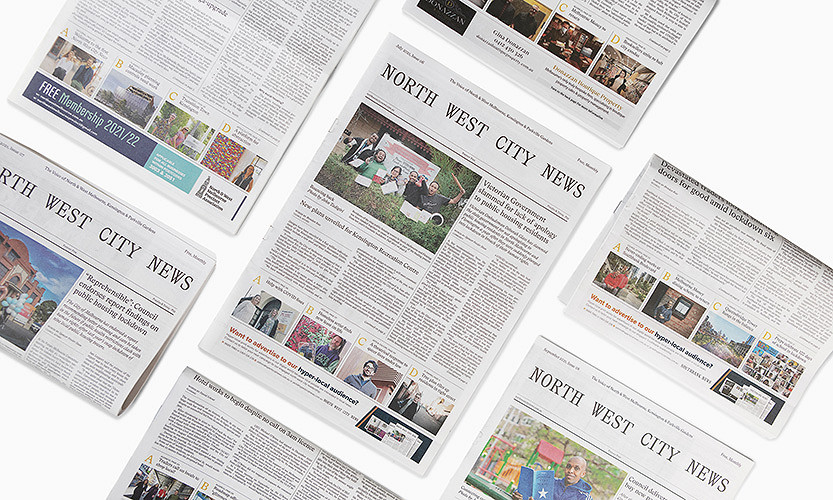Victorian Government’s affordable housing levy
The Victorian Government has introduced legislation to parliament for a new Social and Affordable Housing Contribution (SAHC) provision.
A 1.75 per cent levy, starting on Thursday, July 1, 2024, is to be paid by all new residential developments over three dwellings and subdivisions of more than three lots in metropolitan Melbourne and the major regional centres of Greater Geelong, Ballarat and Greater Bendigo.
Zero new public housing would be built under the levy. Zilch.
The legislation also proposes to exempt Victorian social housing- including public housing- from paying rates to councils in these same locations.
The Victorian Public Tenants Association (VPTA) and the Community Housing Industry Association (CHIA) have welcomed the rates exemption, with both saying it finally treats social housing as infrastructure.
I feel both organisations are making a mistake in not assessing the real impact on the affected councils’ finances of the rates exemption.
The Municipal Association Victoria’s (MAV) response to the announcement on the council rates exemption was one of dissatisfaction.
“Disappointingly, the Victorian Government has walked away from its long partnership with Local Government, to provide services to the residents of social and affordable housing, by exempting itself from paying council rates and charges on almost 70,000 social housing dwellings across metropolitan Melbourne and the regional cities of Ballarat, Bendigo and Geelong,” MAV president Cr David Clark said.
“On the high-level numbers provided by the state government this morning, over ten years this will divert upwards of $540 million away from vital council services such as parks, waste management, kindergartens, active transport and maternal and child health,” Cr Clark said.
“Increased access to social housing dwellings is vital to relieving homelessness and having housing options for those in critical need – every Victorian agrees on that.”
“But providing local services to these residents – the families and individuals living in these dwellings - is also critical. Social housing should be supported and subsidised by the Victorian Government, not just by the ratepayers of each municipality.”
“The cumulative impact of this reversal on rates and charges, of other cost-shifting measures, as well as the financial constraints of the rate cap, once again places Council budgets in a no-win position when it comes to just maintaining, let alone enhancing, much needed community services.”
“Communities are asking councils to do more than ever in their local areas while the state actively works to undermine their financial sustainability.”
City of Melbourne Deputy Mayor Cr Reece and Cr Leppert have spoken out opposing the rates exemption. Cr Reece has said the change would reduce the City of Melbourne’s budget by $2.2 million a year.
Cr Leppert said those councils that had been doing the most to facilitate new social housing within their municipalities would be hardest hit by the “blatant cost shift.”
If the rates exemption does get through parliament, I envisage public housing residents will come under attack as being a burden on those who will most likely be asked to pay more in their own rates to recover councils’ lost revenue.
With developers now opposing the levy, Premier Andrews is complaining that developers had supported the idea. Relying on developers to deliver public good outcomes is a pipedream that is set to become a nightmare for Labor.
The most likely outcome (at the time of writing this column) is that this legislation will be defeated in the Upper House as Liberal and National Parties MPs are opposing it.
They have no alternative policy and are only in a contest with Labor to be developers’ best friends.
Inclusionary Zoning is a better way forward
The alternative to a levy like the one proposed is Inclusionary Zoning (IZ) which when mandated compels all large developments to include affordable housing.
IZ legislation exists in Victoria with voluntary agreements encouraged between developers and councils to have up to five per cent of new stock to be affordable with both new public and community housing as options.
Not being mandatory there have only been a few agreements reached in Victoria. By way of comparison, South Australia mandates 15 per cent under a Liberal government.
A mandated IZ requirement on all large developments across Victoria would deliver more affordable housing faster and not put councils under financial pressure.
Is public housing infrastructure?
I find this term hard to come to grips with. Public housing being equated with roads, bridges and hospitals doesn’t sit comfortably in my mind.
I prefer to see public housing as a sure pathway to the human right to affordable, secure housing.
This term was the headline of major Australian Housing and Urban Research Institute (AHURI) report a few years ago:
This report found that direct federal government investment in public housing was the best way to deliver what is urgently needed.
Commonwealth Rent Assistance (CRA) would not be needed to make the new stock viable. Community Housing Organisations in Victoria claim CRA for their tenants in addition to charging tenants 30 per cent of their household income, compared to 25 per cent in public housing and no CRA.
The continued move to have community housing organisations join with developers to take over and demolish existing public housing, only to charge residents more in rent and set up future federal governments for more going expense, needs to come to a halt in Victoria.
I am looking forward to a federal election that will see a change in government to one that returns to public housing investment •

Jo Ryan unveils Ordered Chaos at Blender Studios



 Download the Latest Edition
Download the Latest Edition